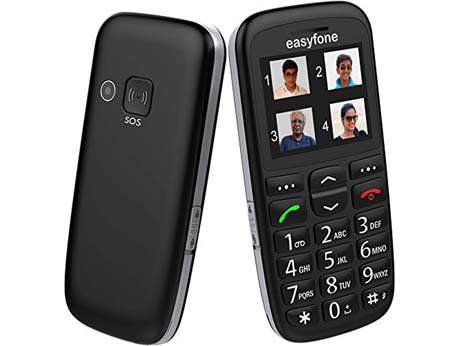
As government mandates panic buttons on mobile phones, makers slowly respond
By Anand Parthasarathy
Bangalore, September 25 2016: The spate of attacks on women in recent years, has prompted the Indian government to make an emergency call button mandatory on all mobile phones sold in India, from January 2017.
An SOS from a phone by itself is of limited help, unless one can quickly establish from where it originated. So, government has also set a date -- January 2018 -- by which phones must have in-built location capability based on the Global Positioning System (GPS) satellite network.
These are all well meaning initiatives, but will the makers fall in line? The global mobile handset industry is generally unwilling to customise phones for one country in any aspect that affects hardware. Software is a different matter -- and most international brands overlay the user interface with localized extensions -- mostly making money in the process through content providers.
The government's diktat can be met in two ways: by a physical button somewhere on the face or back of the phone -- or by a virtual button on the screen, through software. It looks like either will meet the requirement. The second option is simply achieved and industry shouldn't quibble , if it wants to do business in what is the world's largest remaining market for mobile phones. A feature phone, industry jargon for a basic non-smart, non-touch handset can't create a virtual button. So it will have to get round the limitation, by dedicating a numeric key -- like 9 -- to invoke the SOS function.
The government order was issued in April -- and finally this month, a few mobile phone makers have answered the challenge and announced models with an emergency button.
One of the most affordable is Admire Star from the Indian maker, Zen Mobile, a dual 3-G SIM, dual camera, 4.5 inch screen, device running the latest Android 6 Marshmallow OS. It offers an SOS feature that allows the user to send location details to 5 pre-selected numbers, in the event of an emergency.
Videocon, launched a designed-in-India smartphone last week -- Cube 3 -- with a built-in "SOS--BeSafe" app. It cleverly uses the power on-off button as the panic button to send alerts to the numbers on the emergency list. Making good use of GPS, Videocon has created a tool where a map shows nearby police stations and hospitals. Other security -related features include 'Alert', 'Walk with Me' and 'Reach on Time'.. all tools to assure loved ones of your safety. Cube 3 is basically a 4G VoLTE phone with 3GB RAM, 5 inch HD screen and a 13 MP rear camera -- for Rs 8490
|Women are not the only target customers for phones with emergency buttons. What about senior citizens? Many still prefer the older candybar-shaped feature phones with physical keys and a non-touch screen -- provided the keys are large and chunky. SeniorWorld, a product portal aimed at the elderly, features an affordable ( Rs 3375) handset for seniors, called Easyfone. You can dial up to 8 contacts just by pressing a single digit number, indicated beside a photo of the person, on the 2.2 inch screen, four at a time. Another thoughtful feature: a cradle-type charger, much easier than having to plug and unplug the normal charging cord. But most usefully, Easyfone has a large physical button on the back cover which sets off multiple calls, text messages -- and a siren for immediate help. You can set the Menu to English and Hindi.
This is the SOS button scene today. There are 90 days for the rest of the industry to comply and make India the first nation, where personal safety is a default feature on all phones.